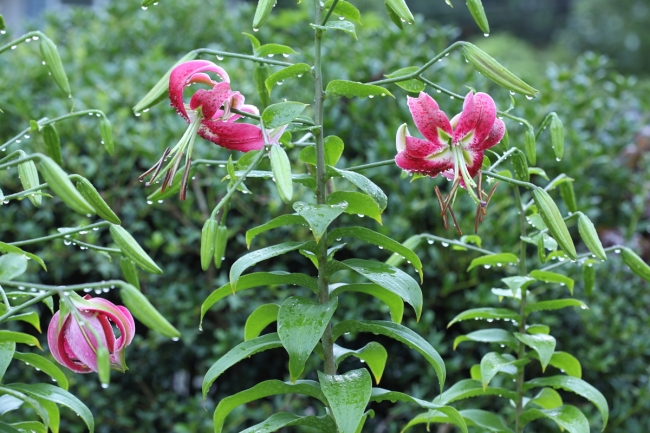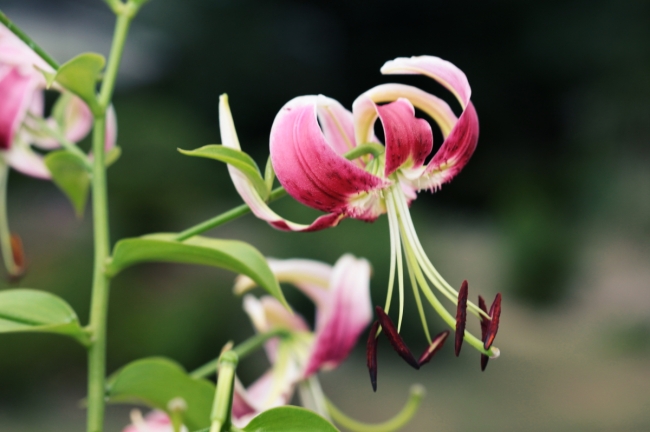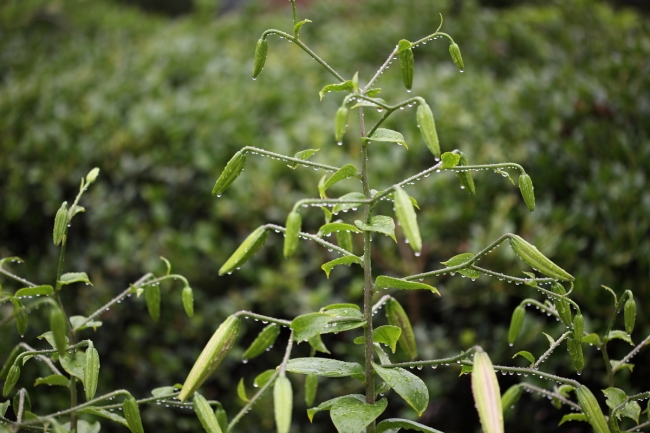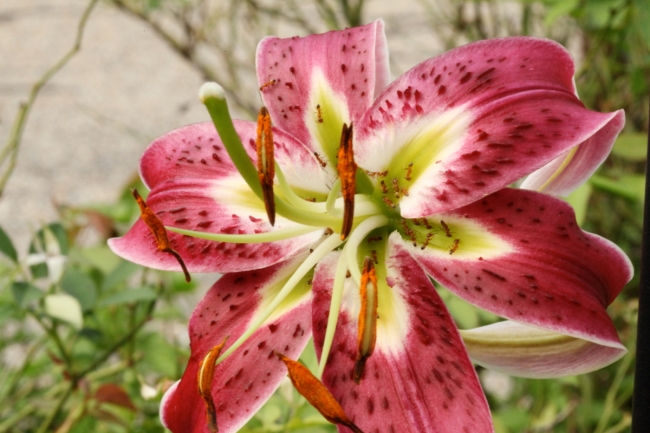Lilium ‘Black Beauty’ is now flowering in my garden. Six years ago I planted the bulb in a place with full sun and sandy loam. Now the clump has seven flowering stems totaling 70 flower buds. The largest stem is five feet tall with 25 flower buds. ‘Black Beauty’ provides a bold answer to the question: Can lilies thrive in the Deep South?
Yes!
Lilium ‘Black Beauty’
Lilium ‘Black Beauty’ Background
Dr. Allan Armitage of the University of Georgia describes ‘Black Beauty’ as “a vigorous hybrid resulting from the cross between L. henryi and L. speciosum. […] These normally incompatible species were hybridized using embryo culture, a powerful technique for the development of future hybrids” (Herbacious Perennial Plants, Third Edition, p. 637).
The Pacific Bulb Society website notes that ‘Black Beauty’ is a sterile diploid lily hybridized by Leslie Woodriff (who also created ‘Stargazer’).
The North American Lily Society ranks ‘Black Beauty’ as number one on the Hall of Fame Lilies.
From my garden in 2011
Personal Observations
‘Black Beauty’ rises as a rosette from the ground in March with wide, glossy leaves. In April and May the stems grow to five feet and flower buds begin to form, developing through June. In July the buds, which point downward at angles away from the central stem, begin to open, starting from the bottom. Each flower consists of six recurved tepals of a red-purple, berry-like color, whitish on the edges and back sides, with raised darker spots on each tepal, called papillae, and with an angular indentation (nectary) at the base of each tepal of green edged in white. The overall appearance of the flower is like many Oriental and Orienpet lilies, but this one appears more wild or less highly-bred, which I adore.
I have not noticed any fragrance. Nectar is in the center of the flowers, which bees and ants sometimes visit. After flowering, which continues into August, the stems persist until frost. Then, they slowly turn yellow and dry out, after which a gentle tug easily pulls them out of the ground for composting.
Lilium ‘Black Beauty’ is a tough plant. It thrives in my hot, humid, Alabama (USDA zone 8) garden. For the first several years I grew it between the edge of a lawn and asphalt in full, all-day sun with no mulch and no supplemental watering. During these years, it increased. Then, I unknowingly planted a China rose on top of it one winter. The next few years it grew through the rose, flowering and increasing. Finally, I transplanted the rose elsewhere and ‘Black Beauty’ now occupies a prominent place in a new perennial border where I fertilize it with compost and compost tea and provide deep watering in the absence of rain. This year it is the largest ever.
I do not plant lilies with afternoon shade. In my experience, lilies need sunlight from all directions in order to grow upright. Even in full sun, the largest stems aim slightly southward and the smaller stems aim away from the shade of the larger stems. With afternoon shade, lilies I have grown become lanky, growing strongly in the direction of sunlight and flopping over under the weight of their flowers, which aren’t numerous anyway.
The ‘Black Beauty’ lily is one of my favorite flowers. I look forward to its blooming every midsummer.
Buds in late June
Ants visiting the flowers in 2011



